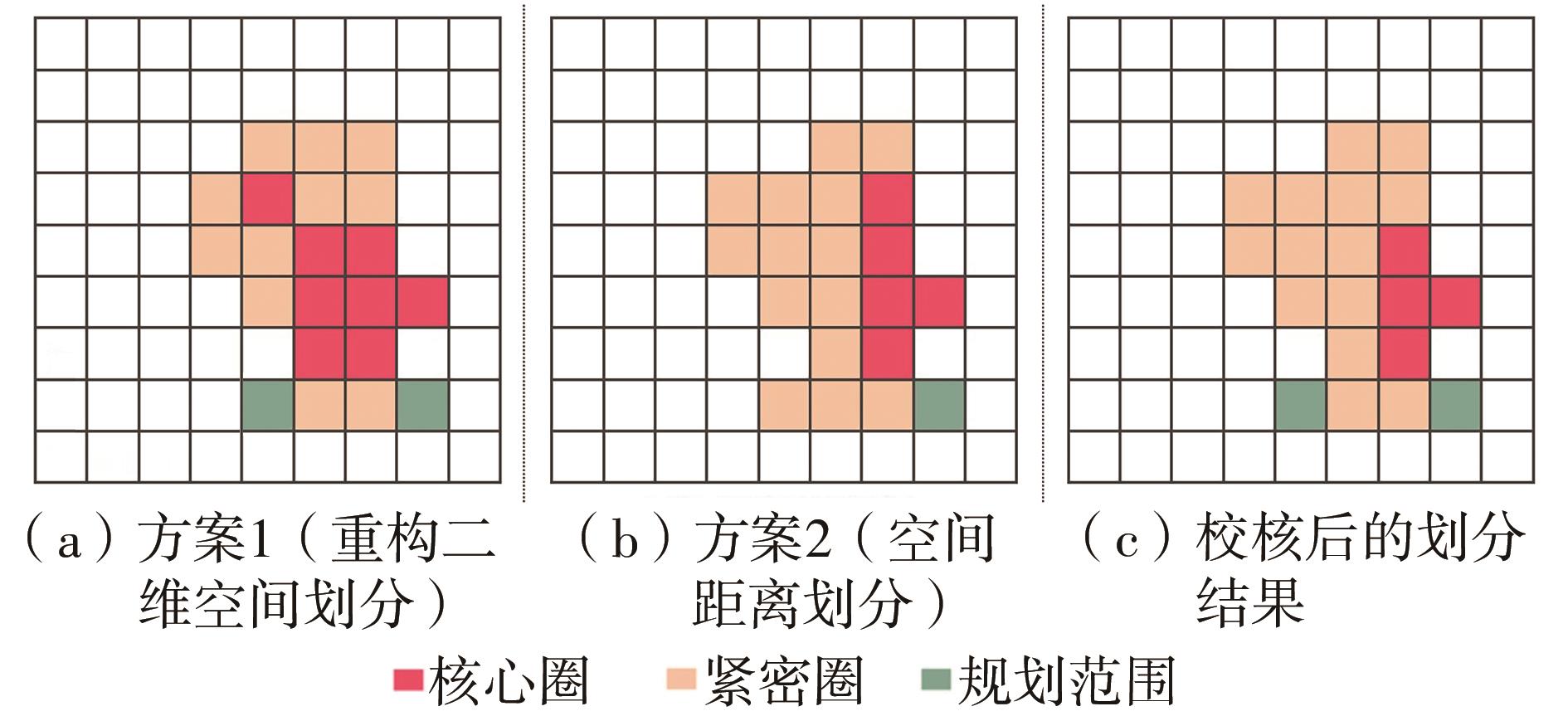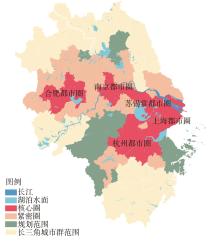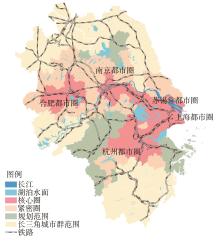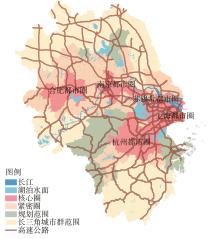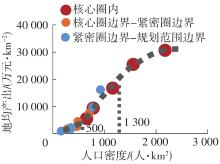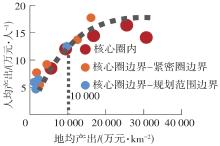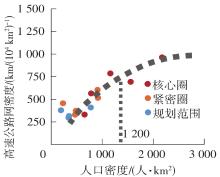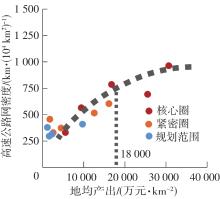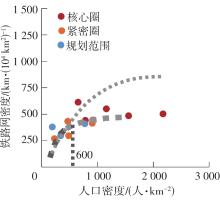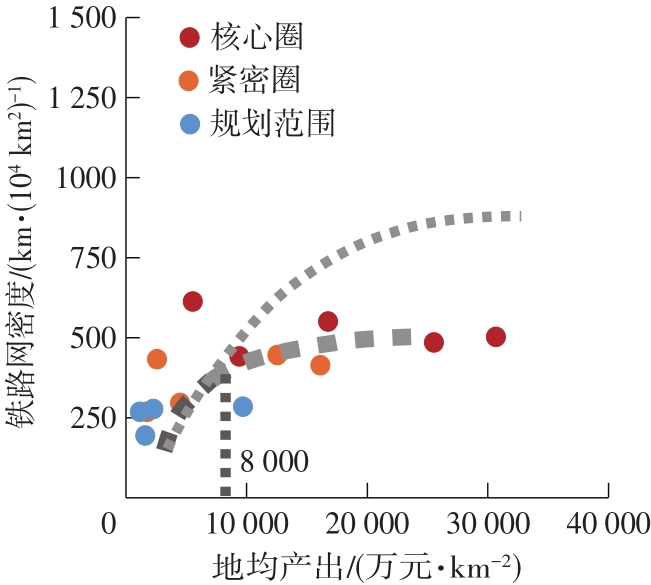| 1 |
汪光焘,叶青,李芬,等 .培育现代化都市圈的若干思考[J].城市规划学刊,2019,67(5):14-23.
|
|
WANG Guang-tao, YE Qing, LI Fen,et al .Thoughts on cultivating modern metropolitan area[J].Urban Planning Forum,2019,67(5):14-23.
|
| 2 |
余慧敏,岳洋,曹卫东 .快速交通对我国区域可达性及经济空间关联的影响[J].地理与地理信息科学,2020,36(5):21-28.
|
|
YU Hui-min, YUE Yang, CAO Wei-dong .Impact of rapid traffic on China’s regional accessibility and economic spatial correlation[J].Geography and Geo-Information Science,2020,36(5):21-28.
|
| 3 |
中华人民共和国国家发展和改革委员会,中华人民共和国交通运输部 .长江三角洲地区交通运输更高质量一体化发展规划[EB/OL],[2020-4-2]..
|
| 4 |
马燕坤,肖金成 .都市区、都市圈与城市群的概念界定及其比较分析[J].经济与管理,2020,34(1):18-26.
|
|
MA Yan-kun,XIAO Jin-cheng,Definition and com- parative analysis of metropolitan areas,metropolitan circles and urban aggllomerations[J].Economy and Management,2020,34(1):18-26.
|
| 5 |
胡明远,龚璞,陈怀锦,等 .“十四五”时期我国城市群高质量发展的关键:培育现代化都市圈[J].行政管理改革,2020,136(12): 20-30.
|
|
HU Ming-yuan, GONG Pu, CHEN Huai-jin,et al .The key to high-quality development of China’s city clusters in the“14th Five-Year Plan”period:building the modem metropolitan areas[J].Administration Reform,2020,136(12):20-30.
|
| 6 |
郑德高,朱郁郁,陈阳,等 .上海大都市圈的圈层结构与功能网络研究[J].城市规划学刊,2017,65(S2):63-71.
|
|
ZHENG De-gao, ZHU Yu-yu, CHEN Yang,et al .Structure and functional network of shanghai metropolitan [J].Urban Planning Forum,2017,65(S2):63-71.
|
| 7 |
罗守贵,金芙蓉,黄融 .上海都市圈城市间经济流测度[J].经济地理,2010,30(1):80-85.
|
|
LUO Shou-gui, JIN Fu-rong, HUANG Rong .The measurement of economic flow of Shanghai metropolitan regions [J].Economic Geography,2010,30(1):80-85.
|
| 8 |
甄茂成,党安荣,阚长城 .基于大数据与网络分析的长三角城市群识别研究[J].上海城市规划,2019,29(6):16-24.
|
|
ZHEN Mao-cheng, DANG An-rong, KAN Chang-cheng .Study on the identification of urban agglomerations in the Yangtze river delta based on big data and network analysis[J].Shanghai Urban Planning Review,2019,29(6):16-24.
|
| 9 |
李俊峰,焦华富 .江淮城市群空间联系及整合模式 [J].地理研究,2010,29(3):535-544.
|
|
LI Jun-Feng, JIAO Hua-fu .Research on spatial combination and integrated patterns of Jianghuai urban agglomeration[J].Geographical Research,2010,29(3):535-544.
|
| 10 |
李治,连玉君,李培,等 .“圈层”结构、时空差异与能源强度——以十大城市群为例[J].城市发展研究,2015,22(1):56-65.
|
|
LI Zhi, LIAN Yu-jun, LI Pei,et al .Circling-layering economy,temporal and spatial differences and energy intensity-evidence from urban agglomerations(in Chinese)[J].Urban Development Studies,2015,22(1):56-65..
|
| 11 |
张磊 .都市圈空间结构演变的制度逻辑与启示:以东京都市圈为例[J].城市规划学刊,2019,67(1):80-87.
|
|
ZHANG Lei .Institutional perspective on the change of metropolitan spatial structure and its implications:a case study of the Tokyo metropolitan area[J].Urban Planning Forum,2019,67(1):80-87.
|
| 12 |
周一星 .关于明确我国城镇概念和城镇人口统计口径的建议[J].城市规划,1986(3):10-15.
|
|
ZHOU Yi-xing,Suggestions on clarifying the concept of China’s towns and urban population statistics[J].City Planning Review,1986(3):10-15.
|
| 13 |
钮心毅,李凯克 .紧密一日交流圈视角下上海都市圈的跨城功能联系[J].上海城市规划,2019,29(3):16-22.
|
|
NIU Xin-yi, LI Kai-ke .Inter-city functional linkages in Shanghai metropolitan region from the perspective of close daily communication area[J].Shanghai Urban Planning Review,2019,29(3):16-22.
|
| 14 |
高鑫,修春亮,魏冶 .城市地理学的“流空间”视角及其中国化研究[J].人文地理,2012,27(4):32-36,160.
|
|
GAO Xin, XIU Chun-liang, WEI Ye .Study on the sinicization of“space of flows”basing on the visual angle of urban geography[J].Human Geography,2012,27(4):32-36,160.
|
| 15 |
吴康,方创琳,赵渺希 .中国城市网络的空间组织及其复杂性结构特征[J].地理研究,2015,34(4):711-728.
|
|
WU Kang, FANG Chuang-lin, ZHAO Miao-xi .The spatial organization and structure complexity of Chinese intercity networks[J].Geographical Research,2015,34(4):711-728.
|
| 16 |
栾强,罗守贵,郭兵 .都市圈中心城市经济辐射力的分形测度及影响因素——基于北京、上海、广州的实证研究[J].地域研究与开发,2016(4):58-62.
|
|
LUAN Qiang, LUO Shou-gui, GUO Bing .Evaluating the economic radiation power of the central city in the metropolitan area based on the fractal model and its influencing factors analysis:cases study of Beijing,Shanghai and Guangzhou[J].Areal Research and Development,2016(4):58-62.
|
| 17 |
吴康,方创琳,赵渺希,等 .京津城际高速铁路影响下的跨城流动空间特征[J].地理学报,2013,68(2):159-174.
|
|
WU Kang, FANG Chuang-lin, ZHAO Miao-xi,et al .The intercity space of flow influenced by high-speed rail:A case study for the rail transit passenger behavior between Beijing and Tianjin[J].Acta Geographica Sinica,2013,68(2):159-174.
|
| 18 |
刘冰,许劼,张伊娜 .基于城际铁路的城市群空间网络重构——以沪宁,沪杭走廊为例[J].城市规划学刊,2020,68(2):40-48.
|
|
LIU Bing, XU Jie, ZHANG Yi-na .The spatial network reconstruction of mega-region based on intercity high-speed-rail——the case study of Hu-Ning and Hu-Hang Corridor[J].Urban Planning Forum,2020,68(2):40-48.
|
| 19 |
龚朴一,杨家文 .基于微博大数据的中国城市群空间结构研究[J].城市发展研究,2020,27(6):1-8.
|
|
GONG Pu-yi, YANG Jia-wen .Spatial structure study of urban agglomerations in China based on weibo big data[J].Urban Development Studies,2020,27(6):1-8.
|
| 20 |
韩童茜,王立梅,许鑫 .长三角城市群科研合作网络演化研究——基于SCIE和SSCI论文的实证分析[J].情报理论与实践,2020,43(10):151-156.
|
|
HAN Tong-qian, WANG Li-mei, XU Xin .Evolution of scientific research cooperation network in the Yangtze river delta city group:empirical analysis based on SCIE and SSCI papers[J].Information Studies: Theory & Application,2020,43(10):151-156.
|
| 21 |
赵鹏军,胡昊宇,海晓东,等 .基于手机信令数据的城市群地区都市圈空间范围多维识别——以京津冀为例[J].城市发展研究,2019,6(9):2,75-85.
|
|
ZHAO Peng-jun, HU Hao-yu, Xiao-dong HAI,et al .Identifying metropolitan edge in city clusters region using mobile phone data:a case study of Jing-Jin-Ji[J].Urban Development Studies,2019,6(9):2,75-85.
|
| 22 |
杨勇,高汝熹,罗守贵 .都市圈中心城市及其经济势能[J].安徽农业科学,2007,35(13):4062-4063.
|
|
YANG Yong, GAO Ru-xi, LUO Shou-gui .Central cities and their economic potential of metropolitan areas[J].Journal of Anhui Agricultural Sciences,2007,35(13):4062-4063.
|
| 23 |
李振波 .宁波都市圈空间范围界定及经济联系比较研究[D].宁波:宁波大学,2017.
|
| 24 |
张小东,韩昊英,唐拥军,等 .基于百度迁徙数据的中国城市网络结构特征研究[J].地球信息科学学报,2021,23(10):1798-1808.
|
|
ZHANG Xiao-dong, HAN Hao-ying, TANG Yong-jun,et al .Research on the characteristics of urban network structure in China based on baidu migration data[J].Journal of Geo-information Science,2021,23(10):1798-1808.
|
| 25 |
HOLLAND S M .Non-metric multidimensional scaling (mds)[EB/OL].[2008-5-31]..
|
| 26 |
王钊,杨山,龚富华,等 .基于城市流空间的城市群变形结构识别——以长江三角洲城市群为例[J].地理科学,2017,37(9):52-59.
|
|
WANG Zhao, YANG Shan, GONG Fu-hua,et al .Identification of urban agglomerations deformation structure based on urban-flow space:a case study of the Yangtze river delta urban agglomeration[J].Scientia Geographica Sinica,2017,37(9):52-59.
|
| 27 |
燕霞 .基于多维标度技术的中国地区社会经济发展分析[D].广州:华南理工大学,2010.
|
| 28 |
路青,蔡震,吴昊天 .中国都市圈全景扫描及其发展规律研判[J].规划师,2021,37(10):5-11.
|
|
LU Qing, CAI Zhen, WU Hao-tian,et al .A study on the spectrum and development law of metropolitan areas in China[J].Plannems,2021,37(10):5-11.
|

